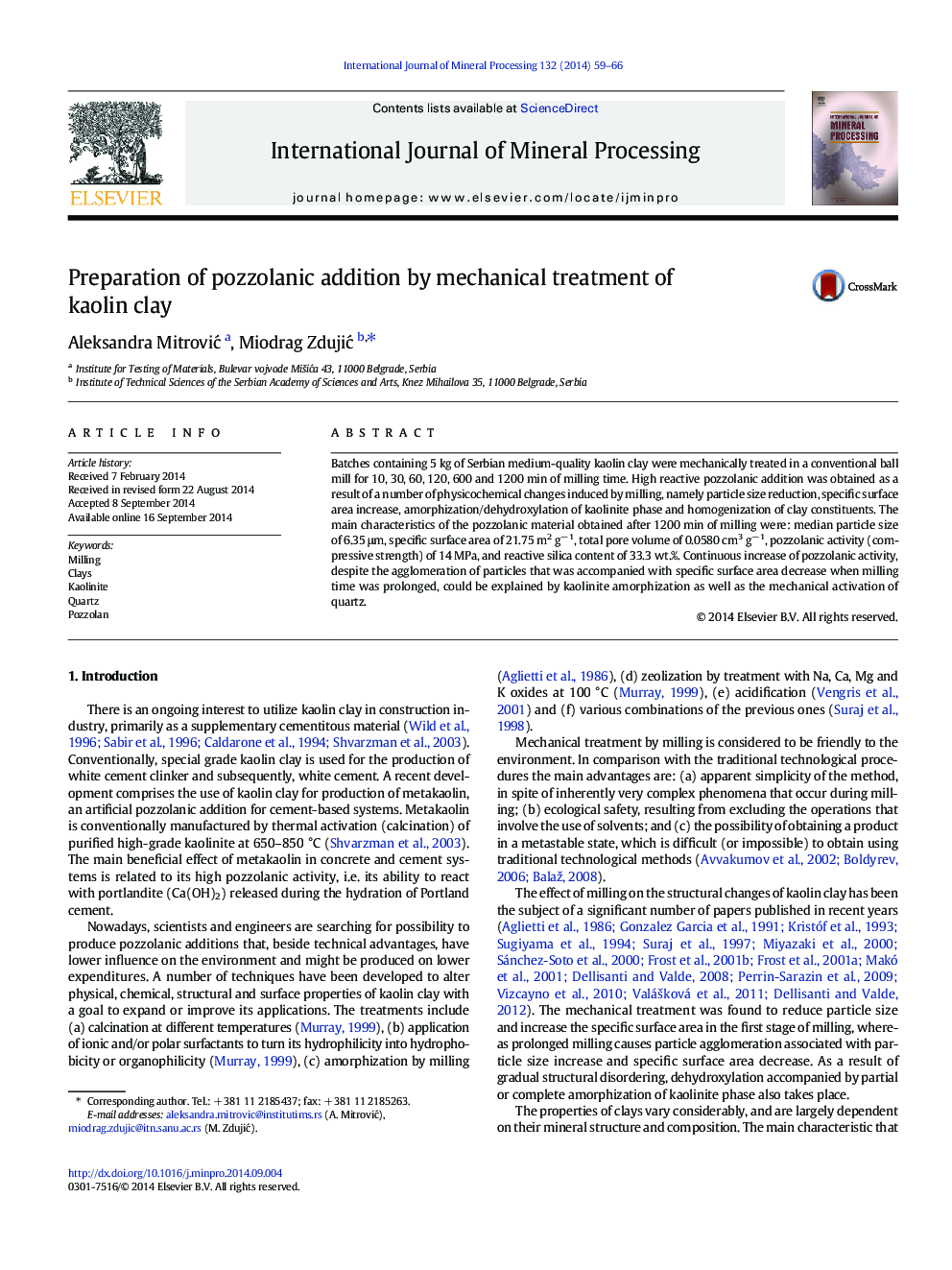| Article ID | Journal | Published Year | Pages | File Type |
|---|---|---|---|---|
| 213924 | International Journal of Mineral Processing | 2014 | 8 Pages |
•Batches containing 5 kg of Serbian medium-quality kaolin clay were milled in a conventional ball mill.•Highly reactive material with 14 MPa pozzolanic activity was obtained by mechanical treatment.•The results confirmed contribution of mineral constituents, kaolinite and quartz to the pozzolanic reaction.
Batches containing 5 kg of Serbian medium-quality kaolin clay were mechanically treated in a conventional ball mill for 10, 30, 60, 120, 600 and 1200 min of milling time. High reactive pozzolanic addition was obtained as a result of a number of physicochemical changes induced by milling, namely particle size reduction, specific surface area increase, amorphization/dehydroxylation of kaolinite phase and homogenization of clay constituents. The main characteristics of the pozzolanic material obtained after 1200 min of milling were: median particle size of 6.35 μm, specific surface area of 21.75 m2 g− 1, total pore volume of 0.0580 cm3 g− 1, pozzolanic activity (compressive strength) of 14 MPa, and reactive silica content of 33.3 wt.%. Continuous increase of pozzolanic activity, despite the agglomeration of particles that was accompanied with specific surface area decrease when milling time was prolonged, could be explained by kaolinite amorphization as well as the mechanical activation of quartz.
